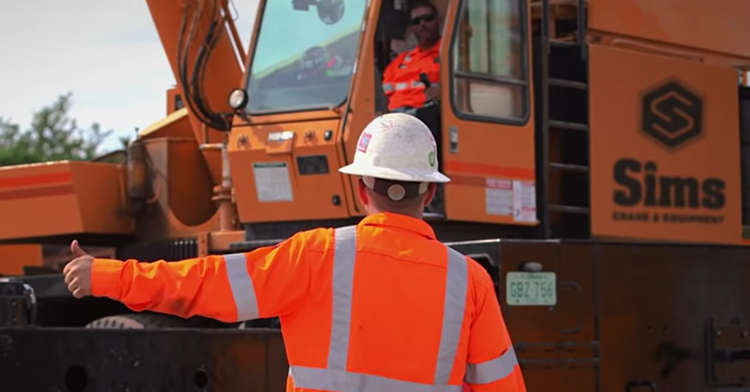
A successful and safe lifting operation doesn’t rely on the crane operator alone. A well-trained signal person is often required to guide the operator when an extra set of eyes and ears are essential. American Cranes & Transport (ACT) Magazine’s September 2019 issue included a discussion about when the signal person is needed and what they must know in order to work in the field.
OSHA’s guidelines require a signal person to be present when the point of operation is not in full view of the crane operator, the operator’s view is blocked in the direction that the load is traveling, or the operator determines that a signal person is needed because of safety concerns at the work site.
What makes a person qualified?
A qualified signal person accurately demonstrates all of the hand signals and can use those at the work site. They must understand equipment operations and limitations, as well as crane swing, raising, lowering and stopping loads plus boom deflection from hoisting loads. A series of tests administered by a qualified employer-based or third-party evaluator will determine if the candidate possesses these skills and knowledge.
Want to know more? Read the whole story: “Everything you need to know about the crane signal person” at American Cranes & Transport’s website by clicking here.